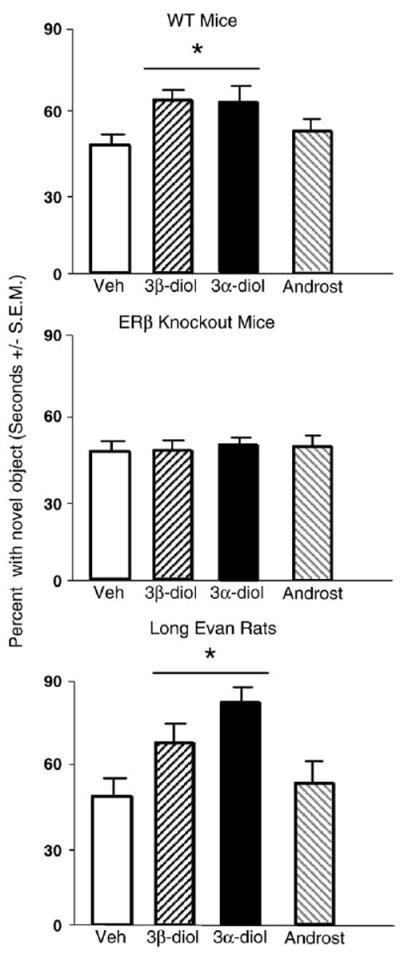Fig. 4.

Represents mean percentage of time with novel object for: wildtype (WT) mice (top) administered acute vehicle control (white bar; n=15), 3β-diol (horizontally-striped bar; n=11), 3α-diol (black bar; n=13), or androsterone (androst; gray-stripe bar; n=12); to ERβ receptor knockout (βERKO) mice (middle) administered acute vehicle control (white bar; n=21), 3β-diol (horizontally-striped bar; n=34), 3α-diol (black bar; n=34), or androsterone (androst; gray-stripe bar; n=29); and to rats (bottom) administered vehicle control (white bar; n=22), 3β-diol (horizontally-striped bar; n=26), 3α-diol (black bar; n=25), or androsterone (androst; gray-stripe bar; n=25). 3α-diol and 3β-diol, but not vehicle or androsterone, significantly increased the percentage of time rats and WT, but not βERKO, mice spent exploring the novel object. * Denotes significant difference (p<0.05).
